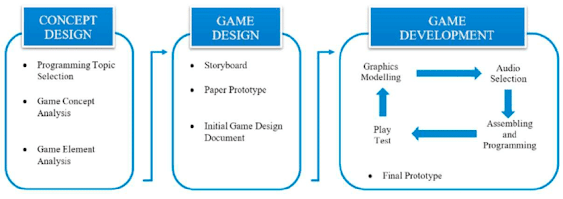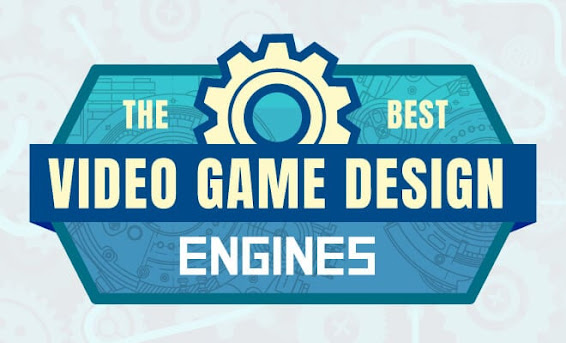How to Create a Successful Video Game: A Comprehensive Guide | Gaming Shooters
 |
| How to Create a Successful Video Game: A Comprehensive Guide | Gaming Shooters |
Introduction
Welcome to our comprehensive guide on creating a successful video game. In this article, we will walk you through the process of developing a captivating and engaging video game that will keep players hooked for hours. Whether you are an aspiring game developer or a seasoned professional looking to enhance your skills, this guide is designed to provide you with valuable insights and practical tips to help you outrank the competition and create an exceptional gaming experience.
Understanding Your Target Audience
Before diving into the development process, it is crucial to understand your target audience. Conduct thorough market research to identify the demographics, preferences, and interests of your potential players. This information will help you tailor your game to their needs, ensuring higher engagement and success.
Game Concept and Design
 |
| Game Concept and Design |
1. Brainstorming and Ideation
Start by brainstorming unique and innovative ideas for your video game. Consider elements such as gameplay mechanics, storyline, characters, and visual aesthetics. Engage your team in creative discussions to generate a pool of ideas that align with your target audience's interests.
2. Conceptualizing the Game Mechanics
Once you have a solid game concept, focus on defining the core mechanics that will make your game stand out. Consider the gameplay loops, controls, challenges, and rewards that will keep players engaged and motivated to progress.
3. Crafting a Captivating Storyline
A captivating storyline can immerse players in your game world and create an emotional connection. Develop well-defined characters, exciting plot twists, and a compelling narrative that will keep players eager to discover what happens next. Use vivid descriptions and engaging dialogue to bring your story to life.
4. Visual Design and Artistic Style
Visual aesthetics play a crucial role in attracting players and setting the tone of your game. Invest in creating stunning graphics, eye-catching animations, and a cohesive artistic style that aligns with your game's theme. Use vibrant colors, detailed textures, and visually appealing effects to enhance the overall experience.
Development Process
1. Game Engine Selection
 |
| Game Engine Selection |
Choose a reliable and suitable game engine that aligns with your project's requirements. Popular options include Unity, Unreal Engine, and Godot. Evaluate their features, scalability, and ease of use to make an informed decision.
2. Prototyping and Iteration
Start by creating a prototype that demonstrates the core gameplay mechanics and features. Test it rigorously and gather feedback from your team and potential players. Iterate on the design based on the feedback received to refine and enhance the gaming experience.
3. Programming and Asset Creation
Once the prototype is finalized, begin programming the game mechanics, artificial intelligence, and user interfaces. Simultaneously, create or acquire high-quality assets, including 3D models, textures, sound effects, and music, to enrich the visual and auditory experience.
4. Rigorous Testing and Bug Fixing
Thoroughly test your game across multiple platforms and devices to identify and resolve any bugs or performance issues. Ensure that the gameplay is smooth, the controls are responsive, and the overall experience is enjoyable. Pay attention to user feedback during this stage to address any concerns promptly.
Marketing and Monetization
1. Pre-launch Buzz
 |
| Pre-launch Buzz |
Create anticipation for your game by implementing a pre-launch marketing strategy. Build a website, create engaging social media content, and release teasers and trailers to generate excitement and attract a loyal following.
2. App Store Optimization (ASO)
Optimize your game's metadata, including title, description, and keywords, to improve its visibility in app stores. Conduct keyword research to identify relevant and highly searched terms that can help your game rank higher in search results.
3. Influencer and Press Outreach
Collaborate with influential gamers, content creators, and press outlets to promote your game. Provide them with early access to build hype and generate buzz. Encourage them to share their experiences through gameplay videos, reviews, and articles.
4. Monetization Strategies
Explore various monetization strategies such as in-app purchases, subscriptions, ads, or a combination of these. Carefully balance monetization with user experience, ensuring that players feel engaged and not overwhelmed by intrusive advertising.
Conclusion
Congratulations on completing our comprehensive guide on creating a successful video game. By following the steps outlined above, you have equipped yourself with the knowledge and strategies to outrank your competition and develop an exceptional gaming experience. Remember to continually iterate, listen to player feedback, and adapt your game to meet the evolving needs of your audience. Best of luck on your journey to game development success!
Keywords:
video game creation, game development, successful video game, target audience, game concept, game mechanics, captivating storyline, visual design, artistic style, game engine, prototyping, programming, asset creation, testing, bug fixing, marketing, monetization, pre-launch buzz, app store optimization, influencer outreach, press outreach, monetization strategies.
Tags:
video game development, game design, game creation, game mechanics, storytelling, visual aesthetics, game engine selection, prototyping, programming, asset creation, testing, bug fixing, marketing strategies, monetization models, app store optimization, influencer marketing, press outreach.


No comments:
Post a Comment
If you have any doubts Please let me know.